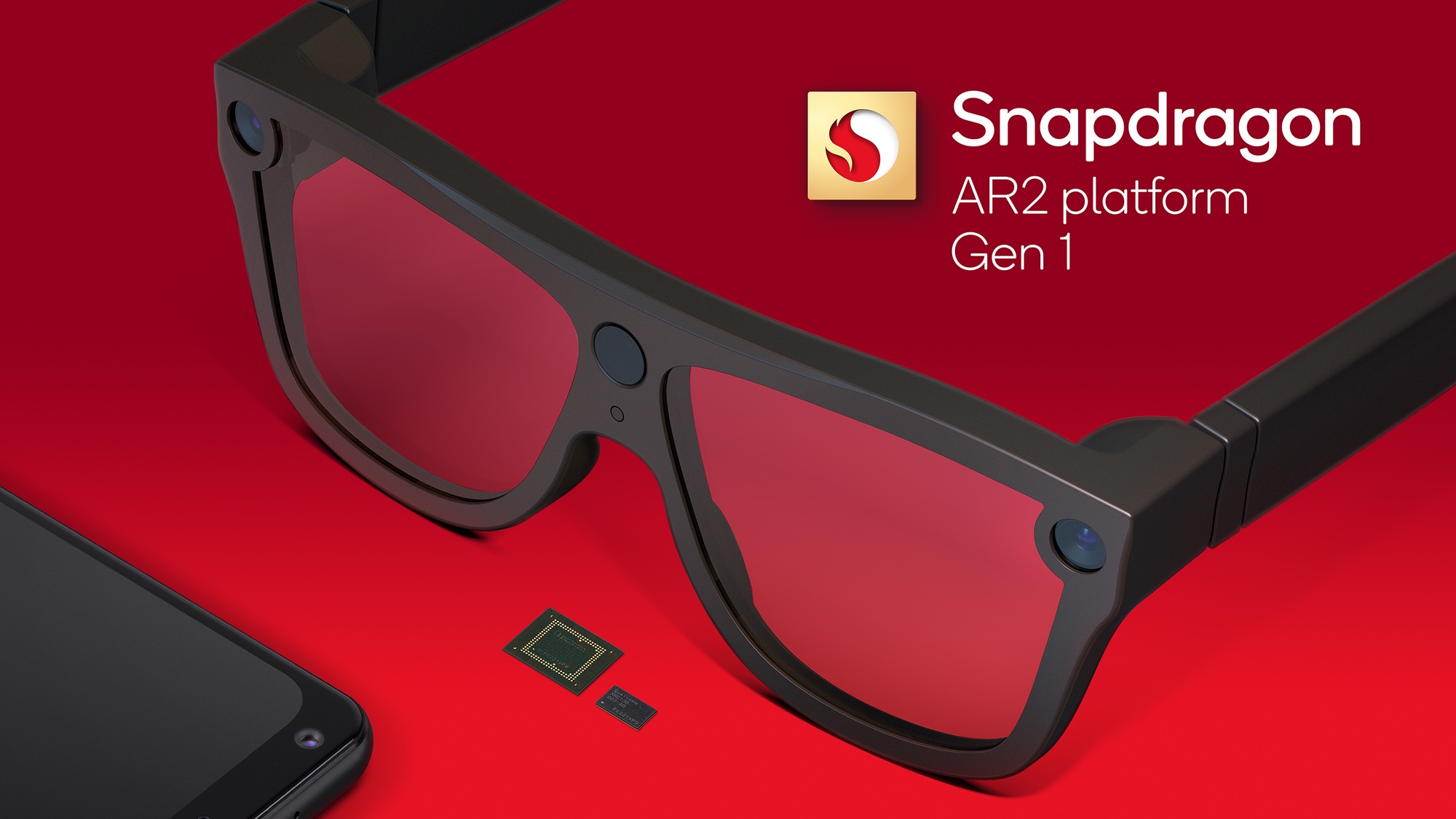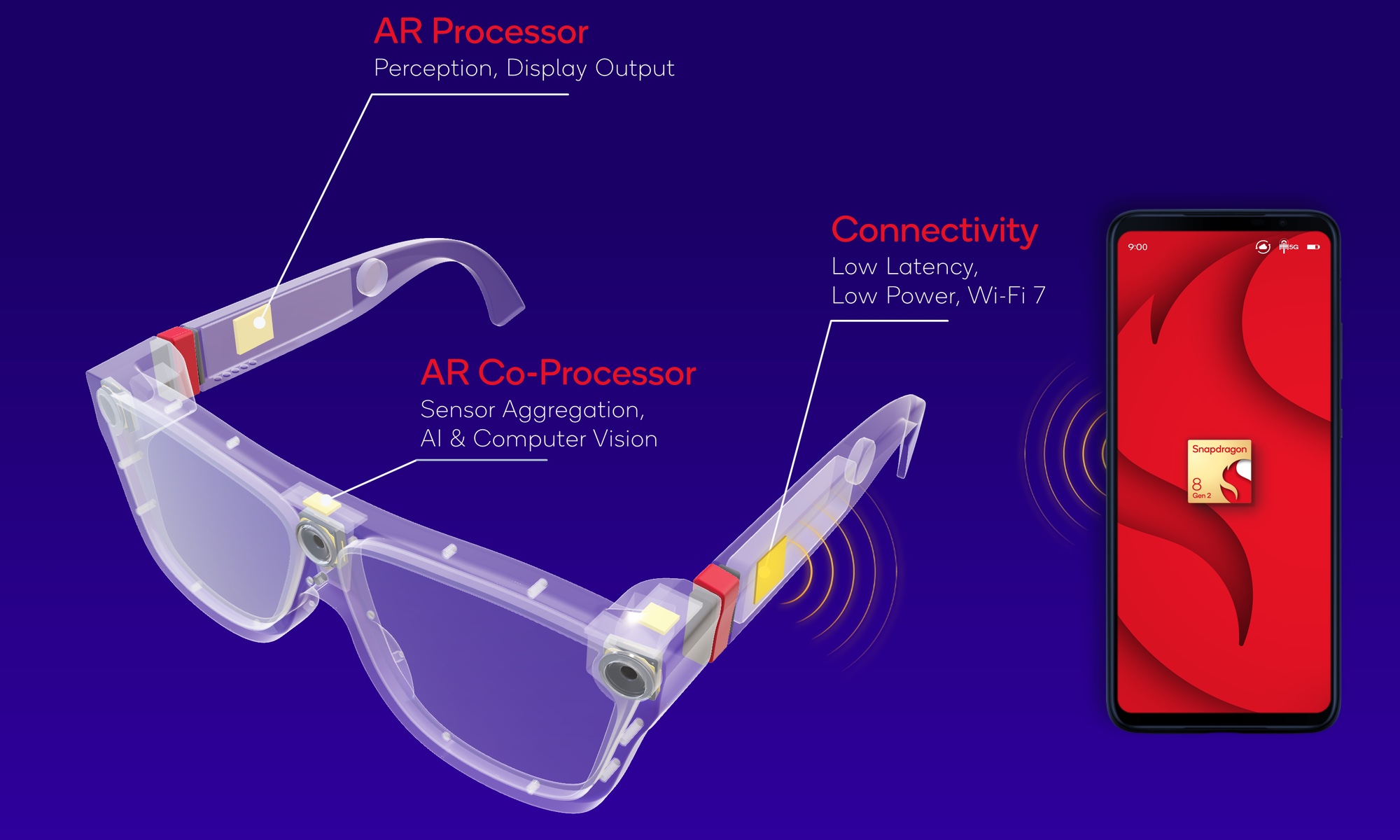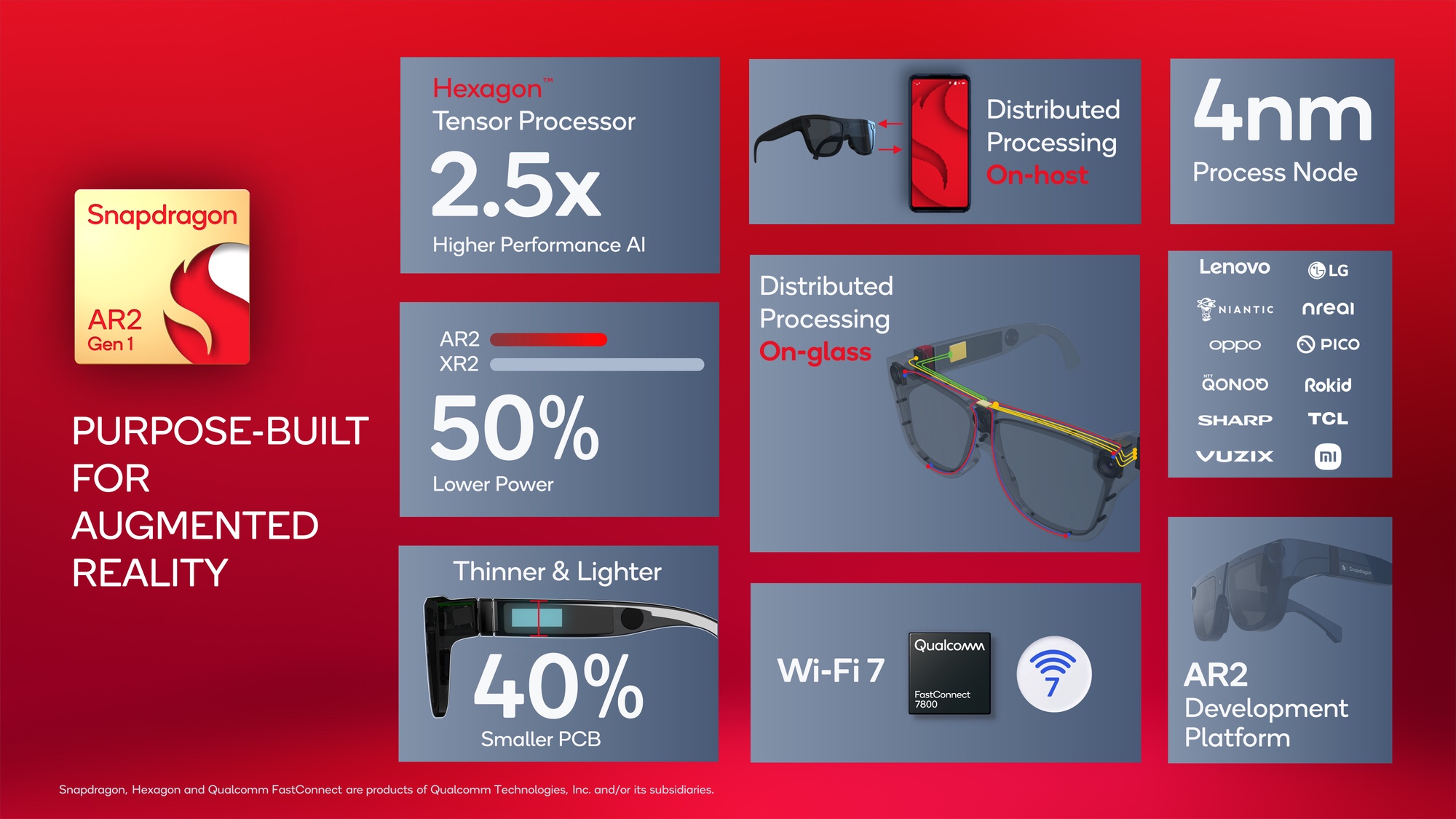Qualcomm's Snapdragon AR2 Gen 1 looks to power more compact AR headsets
Qualcomm unveiled a new platform that should power sleeker designs for AR glasses

WAILEA, Hawaii — Lots of hardware makers are reportedly developing AR glasses of their own, including Apple, though recent reports suggest we may not see Apple Glasses until 2026. In the meantime, Qualcomm just took the wraps off a new augmented reality-focused chipset that it claims will lead to lighter, more stylish glass designs while powering more robust AR experiences.
The new release, Qualcomm's Snapdragon AR2 Gen 1, is the company's first purpose-built platform for AR headgear. Qualcomm's previous efforts in this space have focused on mixed reality with chipsets such as the Snapdragon XR 2 Gen 1 powering the Meta Quest 2 headset while the more recent Snapdragon XR 2 Plus Gen 1 is going to be the driving force behind the upcoming Meta Quest Pro.
The Snapdragon AR2 Gen 1 revealed today (November 16) at the company's annual Snapdragon Summit is different, though. Not only has Qualcomm put the focus entirely on AR glasses with this platform, but it's also emphasized both a boost in AI performance and power efficiency while looking for ways to support thinner, lighter headset designs.
The only question is when we might see products built around the Snapdragon AR2 Gen 1. Qualcomm says it's got a dozen leading device makers actively using the AR2 Gen 1 to build products — Lenovo, LG, Nreal, OPPO, Pico, QONOQ, Rokid, Sharp, TCL, Tencent, Vuzix and Xiaomi. What we don't know, at least as of this writing, is when products based on the Snapdragon AR2 Gen 1 may be ready.
Still, from what we've seen so far about the Snapdragon AR2 Gen 1, Qualcomm may have just figured out a way to make AR glasses more practical. Here's what impressed us about today's announcement.
Snapdragon AR2 Gen 1 design
The Snapdragon AR2 Gen 1 is actually made up of three different components — an AR processor, an AR co-processor and a connectivity module that connects the AR glasses to a host device like a smartphone.
There's a couple of reasons for that approach. Using a device like a smartphone lets the silicon on the glasses themselves offload more complex data-processing tasks to a smartphone (presumably one running one of Qualcomm's Snapdragon 8 chipsets) or a PC. That frees up the processors on the glasses to handle latency-sensitive perception data.
Get instant access to breaking news, the hottest reviews, great deals and helpful tips.

But using this multi-chip approach also enables smaller more flexible designs — a welcome change if you recall the bulky AR glasses that initially hit the market. Qualcomm says the Snapdragon AR 2 Gen 1's main processor takes up a 40% smaller area compared to the Wireless AR Smart Viewer Reference Design Qualcomm built using the Snapdragon XR2. Overall, expect a 2.5x performance improvement in AI tasks while consuming half of the power.
Because glasses using the Snapdragon AR2 Gen 1 platform are designed to consume less than 1W of power, you should be able to wear glasses built on that platform for a longer period of time.
Snapdragon AR2 Gen 1: What the different components do
As for the different parts that make up the Snapdragon AR2 Gen 1 platform, the main AR processor is built on a 4-nanometer process just like the Snapdragon 8 Gen 2 mobile chipset Qualcomm introduced earlier this week. It's situated in one of the arms of the glasses, and it primarily focuses on perception and display output.

To that end, the AR processor supports up to nine cameras to gather information about the world around the user. The processor includes a dedicated hardware acceleration engine for better user motion tracking, an AI accelerator for reducing latency when tracking your hands, and a reprojection engine. That latter feature prevents frame dropping for a smoother experience wearing the glasses.
The AR co-processor is built just for AR and lives in the bridge of the glasses. That location makes a lot of sense since the Snapdragon AR2 Gen 1's AR co-processor is tasked with eye-tracking and iris authentication for security. It also aggregates camera and sensor data, optimizing things for where the viewer is looking only — a move that Qualcomm says improves power consumption.
On the other arm of the glasses opposite of the AR processor is where you'll find the connectivity chip, which uses Qualcomm's FastConnect 7800 system. That means the connectivity chip supports the Wi-Fi 7 wireless standard as well as High-Band Simultaneous Multilink for boosting throughput. Qualcomm says the AR2 Gen 1's connectivity component can deliver less than 2-millisecond latency between the AR glasses and the host device.
What's next for the Snapdragon AR2 Gen 1
To make sure developers build apps for a headworn AR device like the ones that will be powered by the Snapdragon AR2 Gen 1, Qualcomm is promising to optimize its new platform for Snapdragon Spaces. That's the developer platform that gives app makers access to tools for building AR experiences.

Until then, it's a matter of waiting to see which devices emerge that take advantage of the Snapdragon AR2 Gen 1's features. If it means more wearable AR headsets, we can't wait to see what develops.
Philip Michaels is a Managing Editor at Tom's Guide. He's been covering personal technology since 1999 and was in the building when Steve Jobs showed off the iPhone for the first time. He's been evaluating smartphones since that first iPhone debuted in 2007, and he's been following phone carriers and smartphone plans since 2015. He has strong opinions about Apple, the Oakland Athletics, old movies and proper butchery techniques. Follow him at @PhilipMichaels.

